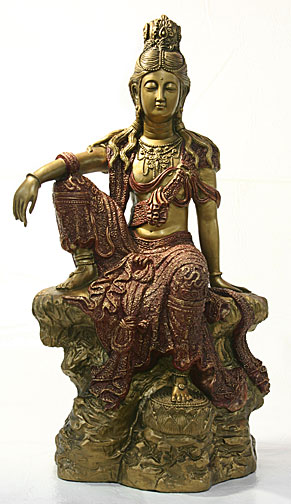Mast cells are important regulator of acupoint sensitization via the secretion of tryptase, 5-hydroxytryptamine, and histamine.
Kristen Sparrow • April 07, 2018


This article gets to the heart of how I’m thinking about acupuncture. There is a school of thought that nerve stimulation is necessary to achieve clinical results. Longhurst, for example, is an advocate for that approach and all of his protocols employ electroacupuncture. I’m assuming his mental model assumes that nerve stimulation is the basis of clinical results. I have a different view. My mental model is amorphous, since we aren’t exactly sure of all of the pieces of acupuncture response, but I think that the actual tiny injury inflicted causes a cascade of neurotransmitters, anti-inflammatory substances et… that get launched in self protection. I also wonder if the needles mimic parasites (hook worm eg) or bee stings with which we coevolved for millenia. So that the actual needling is key. This article gives some credence to my mental model. It also explains the red wheal and flare that is particularly apparent when needling the back. I always take this as a sign that the body is responding to the needles. Since acupuncture basically abolished my allergies, this immune piece has always been crucial to my thinking.
Mast cells are important regulator of acupoint sensitization via the secretion of tryptase, 5-hydroxytryptamine, and histamine.
Abstract
Mast cells (MCs) play a crucial role in mediating the establishment of networks among the circulatory, nervous and immune system at acupoints. However, the changes which occur in MCs during acupoint sensitization, i.e. the dynamic transformation of an acupoint from a “silenced” to an “activated” status, remain uncharacterized. To investigate the morphological and functional changes of MCs as an aid to understanding the cellular mechanism underlying acupoint sensitization, a rat model of knee osteoarthritis (OA) was induced by an injection of mono-iodoacetate (MIA) on day 0. On day 14, toluidine blue and immunofluorescence staining were used to observe the recruitment and degranulation of MCs and the release of mast cell co-expressed mediators: tryptase, 5-hydroxytryptamine (5-HT) and histamine (HA) at the acupoints Yanglingquan (GB34), Heding (EX-LE2) and Weizhong (BL40). Results showed that the number of MCs as well as the percentages of degranulated and extensively degranulated MCs at the acupoints GB34 and EX-LE2 in the light (A), mild (B), heavy (C) osteoarthritis groups were larger than those in the normal control (N) and normal saline (NS) groups (p < 0.01). Comparisons among the A, B and C groups suggested that the number and the degranulation extent of the MCs at the acupoints GB34 and EX-LE2 were positively correlated with the severity of the disease. Some MCs in the A, B and C group showed the release of 5-HT, HA, and tryptase in degranulation at the acupoints GB34 and EX-LE2. Such changes in MCs were not observed at the acupoint BL40. In conclusion, this study confirmed that acupoint sensitization is associated with the increase in recruitment and degranulation levels of MCs on a acupoint-specific and disease severity-dependent manner. The release of tryptase, 5-HT, and HA during MC degranulation is likely to be one of the cellular mechanisms occurring during acupoint sensitization.

